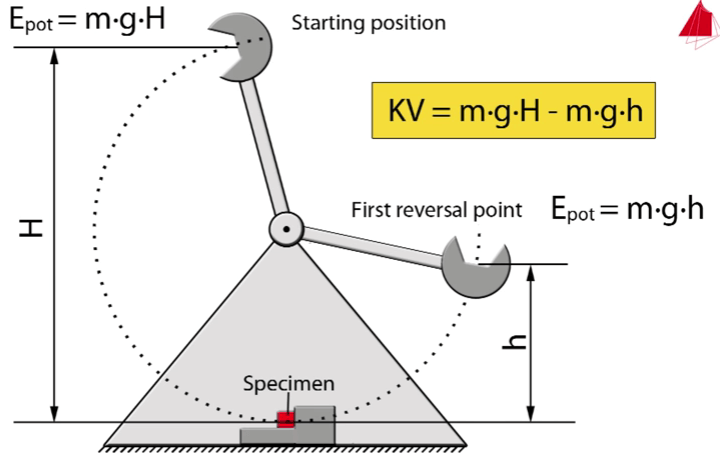
Using a Charpy Impact Machine, we have done considerable work on notch-bar testing and are farther at sea now than when we started. So far, we have been unable to get the notch-bar test to be consistent with any other known test. Lately, I have been investigating the effect of the position of the notch-bar specimen in a bar. To do this I took a 3½ in. square bar and quartered it, then heat treated the four quarters. Each of these pieces was again quartered and a specimen machined and notched. In this way we would have notch-bar tests from the exterior to the interior of the bar. These were made of such lengths that it was possible to make four impact tests on each specimen.
Extreme care was taken in marking the position of these test specimens in the original bar. The notches were then cut with relation to position of the specimen in the original bar. The second notch was cut 90° from the first, and so on around the specimen. In this way we have found that, with a 3½ in. bar of 0.4 or 0.5 per cent, carbon steel when properly heat treated, we could get impact values ranging from 15 to 100 ft.-lb. Just why this is the case we are unable to state; but it does appear to be a fact that along the outside of the original bar the notch-bar test seems to be low and increases toward the center, but it is not always consistent. For instance, we may have, on a single specimen, one notch-bar test giving us 15 ft.-lb. and another 100 ft.-lb.
We have not found such inconsistencies in alloy steels. Alloy steel is consistently good or consistently bad. If it is good, you cannot readily destroy the impact value, no matter what you do; if it is bad—that is, if it is a poor notch-bar steel—and you have sufficient latitude in your draw, you may correct it. In other words, if the hardness you are working to will allow you to draw to about 1050° F (561° C.) or over and then quench this steel from the draw, heat, you can raise the impact value of the steel from about 4 or 10 ft. lb. up to 40 or 50 ft. lb. Just what occurs I do not know. There is evidently a critical-point in steels that have poor impact value, in the neighborhood of 1000° F. to 1050° F: (536° to 561° C.).
I have taken a number of coupons of chrome-nickel-steel with low impact value and heat-treated as follows: Quenched all coupons in water from the same temperature, then varied the draw temperature on these coupons by 50° and water quenched each coupon from the draw heat. No increase in impact value was found until a drawing temperature of between 1000° and 1050° F. was used, when the impact value of the steel was greatly increased over that obtained when the same draw temperature was used and air-cooled.
I have also taken the same steel, water-quenching this steel from the draw heat to produce good impact values, and then redrawing these coupons beginning with about 500° F. and varying the draw temperatures by 50°, and air-cooling them in every case to determine at what point the impact values would be reduced by air-cooling. This method again indicates that the critical point is somewhere in the neighborhood of 1000° to 1050° F. The unnotched impact tensile test bears absolutely no relation to the notched-bar test. By using an impact tensile specimen which is not notched, equally good results may be obtained on low notch- bar steel or a high notch-bar steel. There is no choice between the two.
We have adopted as an impact tensile specimen a diameter of about 0.235 in. and a 1 in. gage length. This will give results on elongations which are comparable with those obtained on the standard 0.505 diameter and 2 in. gage length. By using this specimen, we have found that better results on elongations and contractions may be obtained on the impact tensile test than upon the static tensile test.
We have been unable as yet to determine the exact meaning of the notch-bar test when used in comparison with the commonly accepted tests on steels. We are continuing to work on this most interesting subject and trust that sooner or later we may be able to determine the true meaning of the notch-bar test.
